Rügen, located in the Baltic Sea, is the largest island in Germany.
Renowned for its striking landscapes, chalky white cliffs, and quaint seaside towns, Rügen draws in both locals and international visitors each year, eager to explore its unique natural and cultural offerings.
This German island is part of the northeastern state of Mecklenburg-Vorpommern and is well-connected to the mainland by the impressive Rügen Bridge and the Rügendamm causeway.
With easy accessibility, Rügen serves as an ideal destination for nature lovers, beachgoers, and history enthusiasts alike.
Table of Contents
Geography of Rügen
Rügen covers an area of 926 square kilometers (358 square miles), lying off Germany’s northern coast in the Pomeranian Bay of the Baltic Sea.
Its landscape is diverse and varied, creating a scenic tapestry of beaches, cliffs, lagoons, and forests.
With a notably irregular coastline, Rügen is characterized by dramatic peninsulas, peaceful bays, and numerous lagoons, each contributing to the island’s distinct appeal.
This geography has created a range of ecosystems that support a variety of plant and animal species, and it allows visitors to experience everything from sandy beaches to rocky cliffs within a short drive.
If you’re intrigued by the Baltic islands, consider a journey to Gotland, Sweden’s largest island, and Saaremaa, Estonia’s largest island, where rich history and stunning landscapes create an unforgettable experience.
Baltic Islands: A Size Comparison
| Island | Size (sq km) | Size (sq mi) | Country |
|---|---|---|---|
| Gotland | 3,184 | 1,229 | Sweden |
| Funen | 2,984 | 1,152 | Denmark |
| Saaremaa | 2,674 | 1,032 | Estonia |
| Rügen | 926 | 358 | Germany |
| Zealand | 7,031 | 2,715 | Denmark |
Jasmund Peninsula
One of the most famous natural landmarks in Rügen is the Jasmund Peninsula, where the Kreidefelsen, or chalk cliffs, rise steeply above the Baltic Sea.
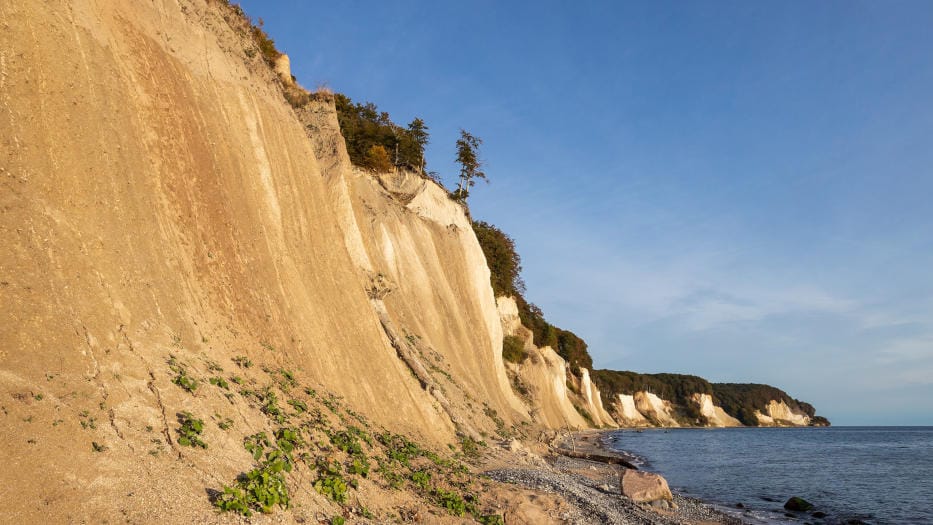
These cliffs are a signature feature of Rügen’s northern coastline and can be seen from miles away, their pale surfaces catching the light in a spectacular way.
Part of the Jasmund National Park, the cliffs are protected as a UNESCO World Heritage site, known for their geological significance and beauty.
The park itself spans over 30 square kilometers (12 square miles) and includes forests, meadows, and marshes, offering visitors a rich environment to explore.
Within the chalk cliffs lies the Königsstuhl, or “King’s Chair,” a famous viewpoint that offers expansive views over the Baltic Sea.
Legends and stories surround this unique rock formation, where ancient Scandinavian rulers were believed to have sat to watch over their territory.
Today, the Königsstuhl remains a top attraction for visitors, who can reach it via a scenic trail that winds through the national park’s beech forests.
Rügen’s Lagoons and Marshes
The largest island in Germany is also home to an intricate network of lagoons, marshlands, and brackish water bodies.
The island’s largest lagoon, Großer Jasmunder Bodden, is located to the north and is a vital part of the island’s ecosystem.
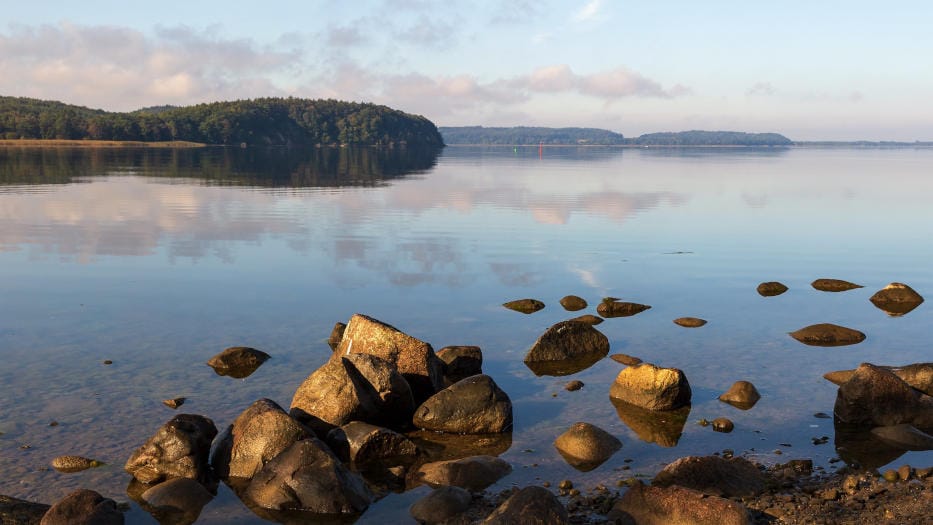
This body of water, where fresh and saltwater meet, is not only a scenic spot but also supports a wide range of bird species and other wildlife.
Birdwatchers flock to Rügen to observe migratory birds, with the area serving as an important stopover for species traveling through Northern Europe.
Further inland, the Schoritzer Wiek and Zudar Peninsula offer additional marshlands and protected natural areas.
These wetlands are filled with lush vegetation and provide a tranquil landscape away from the more popular tourist sites, showcasing the island’s quieter, more untouched side.
Rügen’s Coastal Towns
Rügen is divided into several regions, each with its own distinct character, attractions, and charm.
The central town of Bergen serves as the island’s main hub, providing a variety of amenities, local shops, and restaurants, along with some of Rügen’s oldest architectural treasures, such as the St. Mary’s Church, which dates back to the 12th century.
Along the coast, the resort town of Binz stands out for its well-preserved seaside architecture and long stretches of sandy beach.
Binz became a popular resort area in the early 1900s, and its historical buildings and elegant promenades reflect that era.
Visitors to Binz enjoy traditional spa experiences, strolls along the pier, and a variety of cafes that line the beachfront, making it a popular retreat for relaxation.
Not far from Binz lies Sellin, a coastal gem renowned for its beautiful pier, the Sellin Pier, which extends 394 meters (1292 feet) into the Baltic Sea, making it Rügen’s longest.
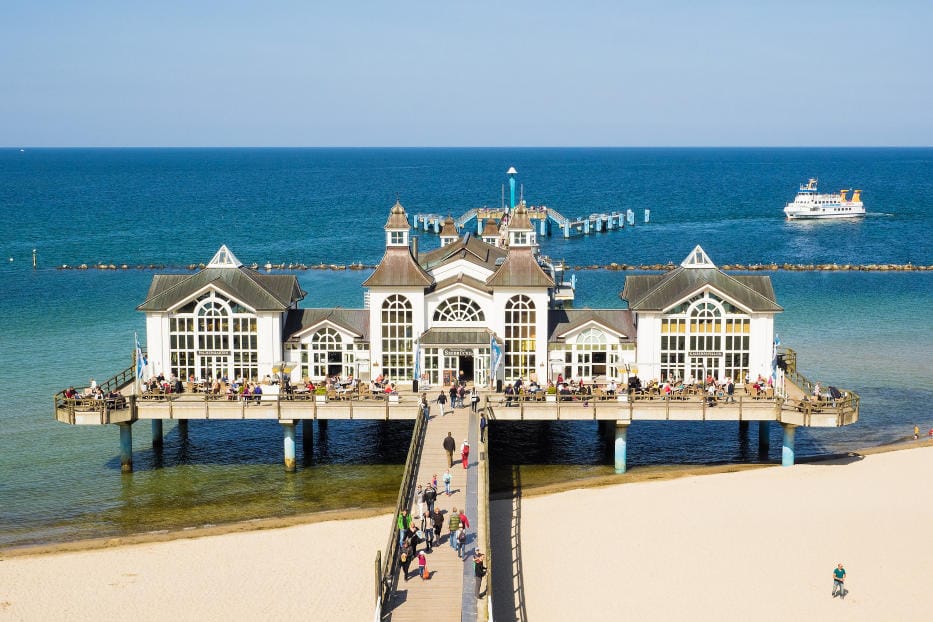
The pier features a picturesque pavilion and a restaurant with sweeping ocean views, creating one of the island’s most iconic scenes.
With its mix of classic seaside architecture and serene beaches, Sellin embodies the romantic charm of Germany’s coastal resorts, offering a stunning spot for relaxation and coastal views.
Further up the coast, Sassnitz serves as an important harbor town. Located near the famous chalk cliffs, Sassnitz is a gateway for those wishing to explore Jasmund National Park and take in the striking coastal views.
With its fishing boats, waterfront cafes, and ferry connections to Denmark and Sweden, Sassnitz has a lively harbor atmosphere and provides easy access to Scandinavia.
In Putbus, a town in the southern part of the island, the influence of 19th-century German nobility is evident in the classical architecture and the beautiful Putbus Palace Gardens, which were once part of a grand estate.
Today, visitors can wander through the gardens, which are filled with sculptures, fountains, and rare plant species, capturing the elegance of a bygone era.
Rügen’s Beaches and Natural Diversity
Rügen boasts several beautiful beaches, with Prora Beach being among the most popular.
This wide sandy beach stretches along the island’s eastern coast and is ideal for swimming, sunbathing, and water sports.
The area near Prora is notable for its unique history; it was once the site of a massive resort complex built by the Nazis in the 1930s, intended as a holiday retreat.
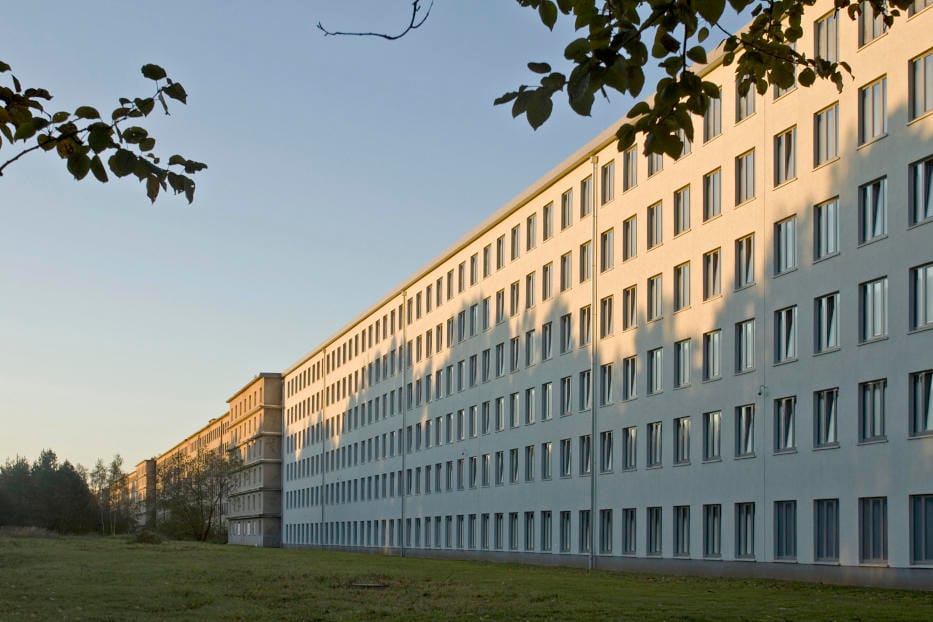
Today, the complex has been repurposed, with parts of it converted into museums, art galleries, and even modern accommodations, blending historical context with contemporary uses.
The island’s natural diversity extends well beyond its beaches. Rügen’s inland areas are filled with mixed forests, meadows, and small inland lakes that support a range of wildlife.
Trails through these natural spaces offer chances to spot deer, foxes, and numerous bird species.
The combination of marshlands, cliffs, beaches, and forests makes Rügen a popular destination for ecotourists and anyone interested in exploring Germany’s diverse natural landscapes.
Protected Natural Areas
In addition to Jasmund National Park, Rügen is home to the Western Pomerania Lagoon Area National Park, one of the largest national parks in Germany.
This park includes numerous smaller islands, lagoons, and stretches of coastline, creating a refuge for migratory birds and other wildlife.
The national park’s carefully maintained ecosystems are essential for preserving the natural beauty of the island and supporting local biodiversity.
For visitors, the park offers hiking and biking trails that provide unique perspectives on the island’s natural landscapes.
Natural Phenomena in Rügen
Rügen is also known for its seasonal natural phenomena that make it even more special.
The Changing Colors of the Cliffs
One unique natural phenomenon in Rügen is the changing colors of the chalk cliffs throughout the day.
Depending on the sunlight and weather conditions, the cliffs can appear in varying shades of white, gray, and even soft pink hues at sunrise or sunset.
This subtle color change is particularly visible at the Königsstuhl viewpoint, where the play of light on the cliffs and sea creates an almost magical effect, mesmerizing visitors with nature’s artistry.
Seasonal Bird Migration
During spring and autumn, the largest island in Germany by area becomes a major stopover for migratory birds, particularly with thousands of greater white-fronted, bean, and lesser white-fronted geese resting in its bays and fields.
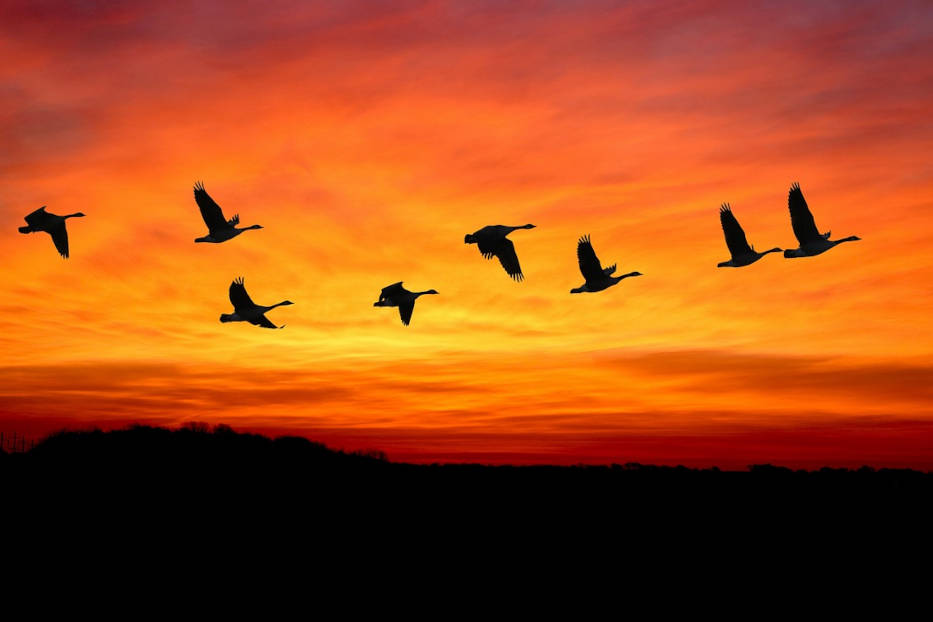
The Western Pomerania Lagoon Area National Park is a favorite among birdwatchers, as thousands of birds gather in the marshlands and lagoons before continuing their journeys.
This seasonal migration transforms Rügen into a birdwatcher’s paradise, drawing photographers and nature enthusiasts who come to observe and capture the spectacle.
Practical Tips for Visiting Germany’s Largest Island
Whether you’re planning a weekend getaway or an extended stay, these practical tips will help you make the most of your visit.
Getting to Rügen
Rügen is connected to mainland Germany via the Rügen Causeway (Rügendamm) and Rügen Bridge (Rügenbrücke), making it simple to reach by car.
If you prefer public transport, trains from major cities like Berlin, Hamburg, or Rostock stop at key towns on the island, such as Bergen auf Rügen, Binz, and Sassnitz.
Although Rügen does not have its own major airport, the closest airports are Rostock-Laage and Berlin-Brandenburg. From these airports, you can travel by train, car, or bus to reach the island.
For a more scenic and unique arrival, consider taking a ferry to Rügen.
Sassnitz Ferry Port is a major hub for international connections, including ferries from Sweden (Trelleborg) and Denmark (Rønne on the island of Bornholm).
Germany Ferry Routes
Getting Around the Island
Public transport is reliable, with buses connecting major towns and attractions.
For a nostalgic experience, ride the “Rasender Roland,” a narrow-gauge steam train running between key resort towns.
Renting a bike or car is ideal for exploring hidden beaches and scenic routes.
Best Time to Visit
The island shines in summer (June to August) when the beaches are at their best.
However, spring and autumn offer milder weather, fewer crowds, and stunning landscapes, especially in Jasmund National Park.
Winter visits are serene, with opportunities for peaceful walks and spa retreats.
Have you ever visited Rügen, or is it on your travel bucket list?
Share our guide and your experiences, favorite spots, or travel tips on social media with others!
